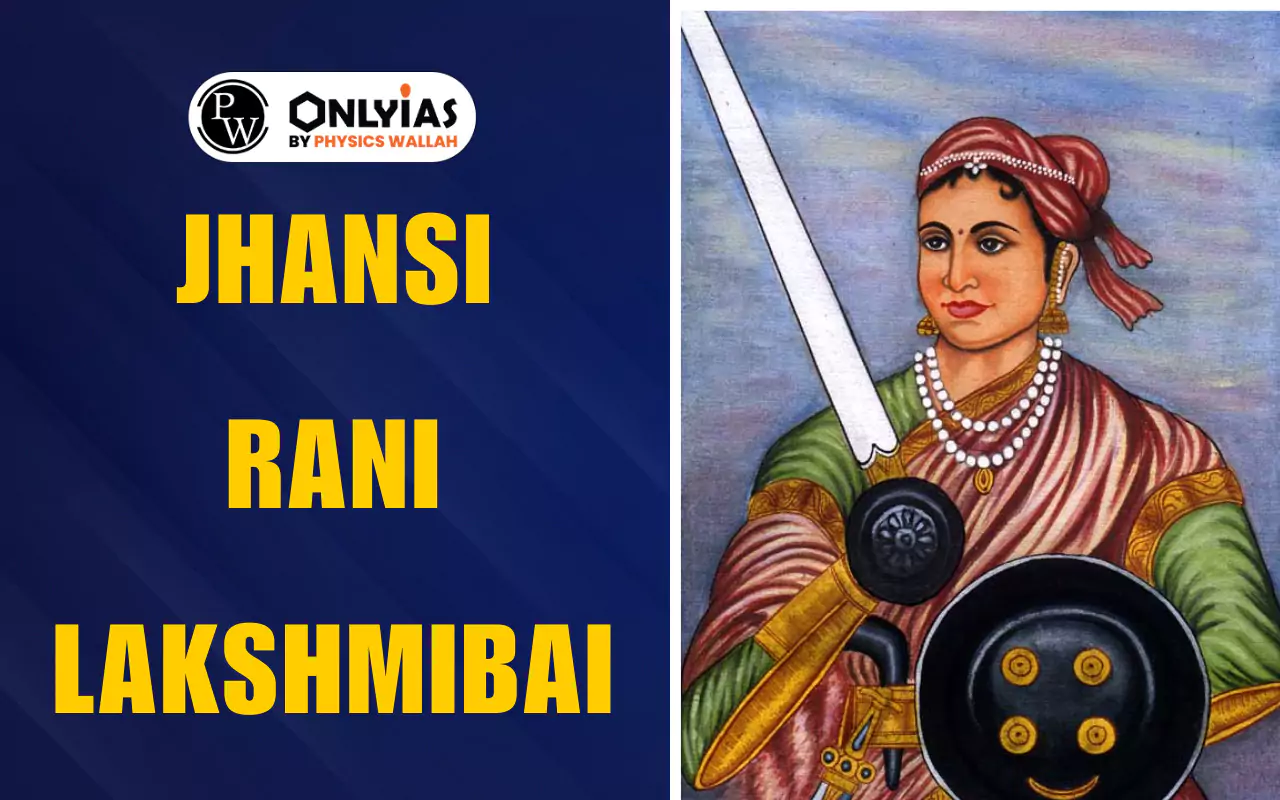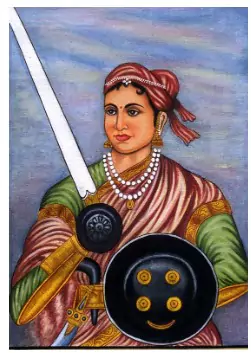Jhansi Rani Lakshmibai, popularly known as “Rani of Jhansi,” played a key role in the Revolt of 1857. Known for her courage, leadership, and sacrifice, she led the Battle of Jhansi against the British, inspiring generations as a fearless warrior queen and symbol of India’s freedom struggle.

Jhansi Rani Lakshmibai, till date, is remembered as one of the courageous leaders in Indian history. She stood against British colonial power during the Revolt of 1857 and inspired countless freedom fighters. Her life shows bravery, leadership, and sacrifice for her land. She is also popularly known as Jhansi ki Rani Lakshmibai.
Rani Laxmi Bai’s birthday is a special day celebrated every year on November 19th. This day is important because it remembers the Queen of Jhansi, who was a huge hero in India’s first fight for freedom in 1857. She was born as Manikarnika Tambe (nicknamed Manu) in 1828. Rani Laxmi Bai showed incredible courage and leadership when she refused to give up her kingdom to the British, famously saying, “I shall not surrender my Jhansi.” Her bravery and strong will still inspire people today, especially women. She is seen as an icon of strength and patriotism. In 2025, her anniversary falls on Wednesday, November 19th.
| Jhansi Rani Lakshmibai Biography | |
| Aspect | Details |
| Name | Jhansi Rani Lakshmibai |
| Birth | 19 November 1828, Varanasi, India |
| Father’s Name | Moropant Tambe |
| Mother’s Name | Bhagirathi Bai |
| Rani Laxmi Bai Husband Name | Maharaja Gangadhar Rao, ruler of Jhansi |
| Rani Laxmi Bai Son Name | Adopted son Damodar Rao |
| Known For | Courageous leadership in the Revolt of 1857, Battle of Jhansi |
| Title | Rani of Jhansi, “Jhansi ki Rani” |
| Death | 18 June 1858, Gwalior, fighting against British forces |
Jhansi Rani Lakshmibai was born as Manikarnika Tambe in Varanasi on 19 November 1828. Her childhood name was Manu. She lost her mother at a young age, and her father raised her with care. Unlike many girls of her time, Manu learned horse riding, sword fighting, and archery.

In 1842, she was married to Maharaja Gangadhar Rao, the ruler of Jhansi. After marriage, she was called Lakshmibai. When their biological child died, they adopted a son, Damodar Rao. However, after the death of her husband in 1853, the British used the Doctrine of Lapse policy and refused to recognize her adopted son as heir.
This started a long conflict between Lakshmibai and the British. She is remembered not only as the Rani of Jhansi but also as a symbol of resistance.
Women Freedom Fighters Of India List
The Revolt of 1857 was the first major uprising against British colonial rule. Rani Lakshmibai played a central role in this movement. Mentioned here are points that reflect Rani Laxmibai Contribution in Revolt of 1857:
The Revolt Of 1857: India’s First War Of Independence
Lord Dalhousie used the Doctrine of Lapse against Rani Lakshmibai. According to this policy, if a ruler died without a biological son, the kingdom would be taken over by the British. After the death of Maharaja Gangadhar Rao, Lakshmibai adopted Damodar Rao as her son. But the British did not accept him as the legal heir. As a result, they tried to annex Jhansi.
Lakshmibai opposed this decision and refused to give up her kingdom. This policy played a major role in her conflict with the British and became one of the reasons for her active participation in the Revolt of 1857.
The Battle of Jhansi was one of the most important events of the Revolt of 1857. When British forces attacked Jhansi in 1858, Lakshmibai decided to defend her fort. Below is the gist of the Battle of Jhansi fought bravely by Rani Lakshmibai:
After leaving Jhansi, Rani Lakshmibai reached Gwalior. She joined other rebel leaders and fought against the British again. On 18 June 1858, during the battle at Kotah-ki-Serai near Gwalior, she was badly wounded. Even in her final moments, she fought bravely.
She did not surrender to the British and passed away as a warrior. The British officer Hugh Rose later wrote that she was “the most dangerous leader” of the revolt. The death of Jhansi Rani Lakshmibai marked a turning point. Though the revolt was crushed, her courage remained an inspiration for future generations.
The legacy of Jhansi Rani Lakshmibai continues to inspire India even today. She is remembered as a fearless warrior queen who gave her life for her kingdom and people.
Ready to boost your UPSC 2026 preparation? Join PW’s UPSC online courses today!
Rani Lakshmibai contributed to the Revolt of 1857 by defending Jhansi, leading her troops, and inspiring Indians with her bravery.
She fought in Jhansi, Kalpi, and finally at Gwalior.
She was defeated by British forces under Sir Hugh Rose in Gwalior.
Her husband was Maharaja Gangadhar Rao, ruler of Jhansi.
Her adopted son’s name was Damodar Rao.
The day is celebrated to honor the life, courage, and ultimate sacrifice of Rani Laxmi Bai, the Queen of Jhansi, who was one of the leading figures and a symbol of resistance in the First War of Indian Independence in 1857. Her bravery and defiance of the British's Doctrine of Lapse continue to inspire generations.
Rani Laxmi Bai's birth anniversary, also known as Rani Laxmi Bai Jayanti, is celebrated every year on November 19.

<div class="new-fform">
</div>